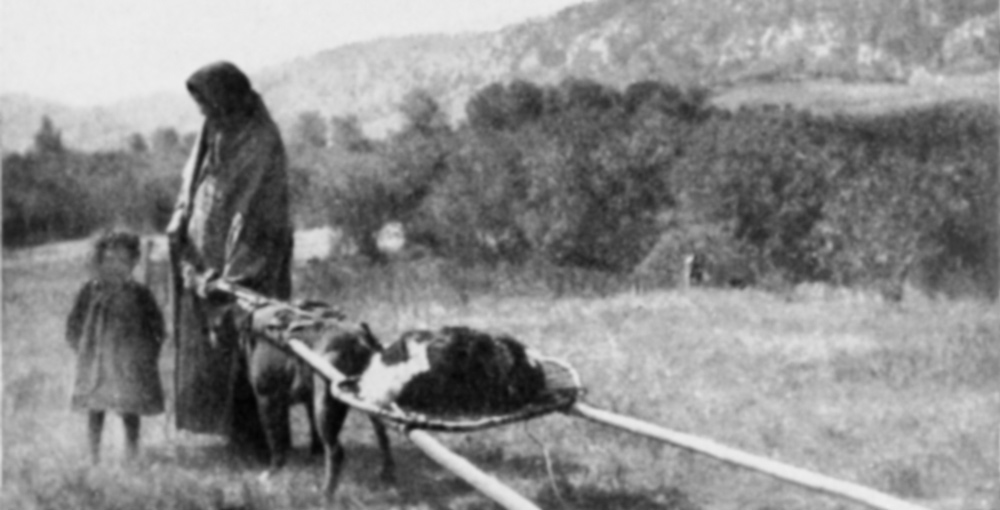Below De Grey Rec. Area, SD The expedition passes the abandoned Fort aux Cedres, a fur trading post built by Régis Loisel. Ordway describes the buildings and nearby Sioux camps. The hunters complain that the soils of the plains are wearing out their moccasins.
Loisel’s Old Fort[1]Originally aired weekdays by Yellowstone Public Radio during the Bicentennial observance of 2003-2006. Narrated by Hal Hansen. Scripts by Whit Hansen and Ed Jacobson. Produced by Leni Holliman. © … Continue reading
Loisel’s Fort aux Cedres
near the upper part of this Island on its S. Side a Tradeing fort is Situated built of Cedar—by a Mr. Louiselle [Régis Loisel] of St Louis, for the purpose of Tradeing with the Teton [Lakota] Bands of Soues (or “Sieux”) about this Fort I saw numbers of Indians Temporary Lodges, & horse Stables, all of them round and to a point at top
—William ClarkThe space picketed in is about 65 or 70 feet square, with centry boxes in two of the angles. The pickets are 13½ feet above ground. In this square he built a house 45½ by 32½ feet, and divided it into four equal parts, one for goods, one to trade in, one to be used as a common hall and the other for a family house.
—Patrick Gass
Dog Travois Poles
we found some of their dog-poles, which answer for setting poles. The reason they are called dog-poles, is because the Indians fasten their dogs to them, and make them draw them from one camp to another loaded with skins and other articles.
—Joseph Whitehouse
The caption with the above photo:
Before they had horses the Indians used dogs, attaching them to the travois, a primitive vehicle consisting of two trailing olies bearing a net or cross bar for a load. The horses of the Spaniards no doubt seemed to the Indians very wonderful “dogs”; Indian names for a horse are derived from their words for dog[2]Clark Wissler, “American Indian Saddles,” The American Museum Journal, Mary Cynthia Dickerson, ed. (New York: The American Museum of Natural History, 1916), 499, … Continue reading
Worn-out Moccasins
our hunters joined us havening killed 2 Deer & a Beaver, they Complain much of the Mineral Substances in the barren hills over which they passed distroying their mockersons.
—William Clark
Weather Diary
Thermot. at rise
Weather Wind at rise
thermotr. at 4 P.M. Weather Wind at 4 oC. P.M 52 above fair E. 82 above fair S. E. a little foggy this morning, a great number of green leged plove passing down the river, also some geese & brant—
—Meriwether Lewis[3]To assist the reader, the editor of this web page has omitted the “day of the month” column and spelled out some of the abbreviations.
Notes
| ↑1 | Originally aired weekdays by Yellowstone Public Radio during the Bicentennial observance of 2003-2006. Narrated by Hal Hansen. Scripts by Whit Hansen and Ed Jacobson. Produced by Leni Holliman. © 2003 by Yellowstone Public Radio. |
|---|---|
| ↑2 | Clark Wissler, “American Indian Saddles,” The American Museum Journal, Mary Cynthia Dickerson, ed. (New York: The American Museum of Natural History, 1916), 499, archive.org/details/americanmuseumjo16amer. |
| ↑3 | To assist the reader, the editor of this web page has omitted the “day of the month” column and spelled out some of the abbreviations. |

